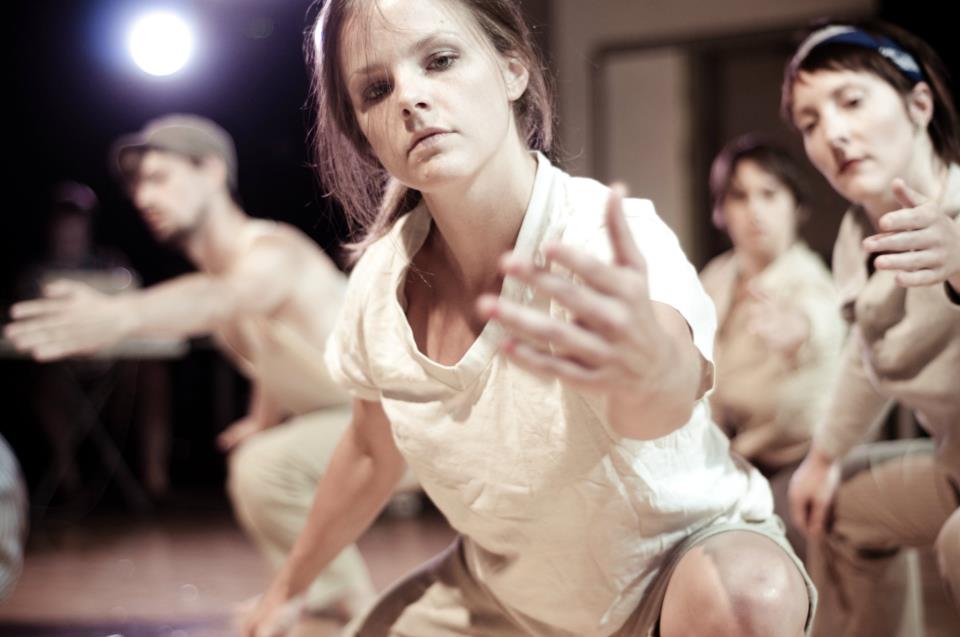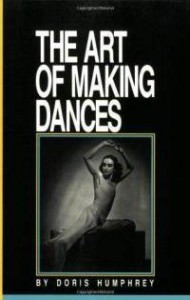by Lauren Warnecke

Perhaps you’ve wanted to try your hand at making dances and never had the chutzpah to get started. You’re not alone, but choreography is an art, a skill, and a trade that is sometimes harder than you might think. You’ll laugh; you’ll cry. You’ll have triumphs and failures, but like anything else, making dances requires practice. Assuming that you’ve already set aside the time and resources, and have space and dancers to work with, here’s a handy list of do’s and don’ts to keep in mind as you embark on the magnificent process of dancemaking (not an all-inclusive list):
DO say “yes”. Censoring your ideas and movement phrases in search of “the perfect dance” stifles the endless possibilities that lie beneath your subconscious. Sometimes it’s beneficial to go into the studio and noodle around in front of a video camera, and from those ramblings begin to form the structure of your dance.
DON’T use extremely popular music. While they can (arguably) get away with this on So You Think You Can Dance, popular music is susceptible to preconceived thoughts and memories among your audience. The Plain White T’s make fun little ditties to dance to, but that doesn’t matter if half your audience is thinking hearing it at the dentist’s office while getting a root canal instead of watching your dance about greasers from the 1950s…
 If you get in a rut, DO rely on time-tested mechanisms such as canon, theme and variations, ABA, and a host of manipulations to expand your material. Often, it’s not more steps that you need but distortions of your core movement phrases to “blow up” the dance you already have. Do your dance backwards, upside down, on the floor, in a circle…. You get the idea. Good resources to check out are Doris Humphrey’s The Art of Making Dances and Lynn Anne Blom’s The Intimate Act of Choreography.
If you get in a rut, DO rely on time-tested mechanisms such as canon, theme and variations, ABA, and a host of manipulations to expand your material. Often, it’s not more steps that you need but distortions of your core movement phrases to “blow up” the dance you already have. Do your dance backwards, upside down, on the floor, in a circle…. You get the idea. Good resources to check out are Doris Humphrey’s The Art of Making Dances and Lynn Anne Blom’s The Intimate Act of Choreography.
DO be wary of props. And nudity. Props, when used to excess, can be tacky, but even worse than this is an underutilized prop. If you’re going to use a prop, make sure it’s necessary and fully utilized. That goes for chairs and loose costume items. The same thing goes for nakedness. It may be en vogue to bare your butt while simultaneously bearing your soul in a dance, but ask yourself if it’s really necessary in order to get your point across. Some of the riskiest dances are not the naked ones with beach balls, but the ones that are just a dancer, simply dressed, moving through space. Always come back to your original idea, and be sure that each element you add to a dance contributes to it.
DON’T try to take on the world in one dance. One of the biggest signs of a novice choreographer is a dance that tries to solve the war in Sudan in 12 minutes. While I’m not saying this isn’t possible (anything is possible), when getting your feet wet I’d encourage you against the “go big or go home” philosophy. Keep to ideas that are close to your heart…
But… DON’T make a dance about your ex-girl/boyfriend. It’s a dance, not a therapy session. No one really wants to see your dirty laundry on stage, especially if it’s pertaining to a mutual acquaintance.
DON’T get frustrated. Be patient with yourself and, if needed, take a step back. Take a week off and let everything sink in.
DO seek feedback along the way, and participate in works-in-progress showings.
DON’T be afraid to throw all of these rules out the window. Textbooks abound on rules and mechanisms by which to create dances (two of which are referenced above), but as you get to know yourself as a choreographer you’ll find out that some of those rules are meant to be broken.

Contributor Lauren Warnecke, M.S., is a Chicago-based dance artist, educator, and writer. She trained at the Barat Conservatory of Dance before earning a BA in Dance at Columbia College Chicago. In 2009, Lauren completed her MS in Kinesiology at the University of Illinois at Chicago, with a concentration in Motor Control and Learning. Lauren is a Visiting Instructor for the department of Kinesiology and Nutrition at UIC, and teaches master classes and seminars in ballet, modern dance, creative movement, and dance pedegogy. She is certified in ballet by the Cecchetti Council of America and a member of the American College of Sports Medicine.
In addition to teaching at UIC, Lauren owns and operates Art Intercepts, under which she creates, informs, and writes about dance. The primary mission of Art Intercepts is to bridge the gap between the scientific and artistic communities to present programming that is informed, inventive, and evidence-based. Lauren is a freelance writer/blogger and maintains monthly columns at Danceadvantage.net and 4dancers.org and is featured on a panel of nationally reputed dance writers at the 2012 Dance/USA conference. She also works periodically as a grant writer and production/stage manager for artists in the Chicago dance and performance community, and volunteers for initiatives encouraging Chicagoans to engage in local, sustainable, and active lifestyles. Lauren likes to hike, bake scones, and dig in the dirt.





Great, simple advice, Lauren! I remember learning all of this back in college but at the time, it didn’t sink in. I wanted to do everything you list as a “don’t” but as I have gotten older, and presumably wiser, I totally understand why those are some bad ideas. LOL!
Thanks, Leigh! Same for me… I loathed composition exercises and thought they were pointless. But now I find myself returning to those tools all the time!